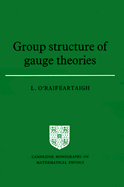Summary
It has been known for many years that the gravitational and electromagnetic interactions of matter can be formulated as gauge theories – based on the Lorentz group SO(3, 1) and the compact ‘internal’ phase group U(1), respectively. But over the past two decades it has gradually come to be accepted that the remaining two (known) fundamental interactions of matter, namely the strong and weak nuclear interactions, are also gauge interactions, a property that had been hidden by confinement for the strong interactions and by spontaneous symmetry breaking for the weak ones. To be more precise, it has now been established beyond reasonable doubt that the weak nuclear interactions combine with electromagnetism to form a gauge interaction based on the compact internal non-abelian group U(2), and, although the evidence is less direct, it is accepted that the strong interactions are gauge interactions based on the compact simple internal (colour) group SU(3). The upshot of these results is that the (known) non-gravitational interactions are now described by a gauge theory based on a compact internal group with Lie algebra SU(3) × SU(2) × U(1). (The global group is actually S(U(3) × U(2)) because of certain discrete correlations in the particle classification, chapter 9.)
If the S(U(3) × U(2)) theory of the non-gravitational interactions is correct, it represents an immense advance because gauge theories, by their nature, determine the form of the interactions, leaving only a finite number of constants as free parameters. In fact it means that the form of all the fundamental interactions is now known. Furthermore, since gauge theories have a geometrical interpretation in terms of fibre bundles, it means that even the non-gravitational interactions have a geometrical significance and are thus brought a step nearer to gravitation.
- Type
- Chapter
- Information
- Group Structure of Gauge Theories , pp. vii - xPublisher: Cambridge University PressPrint publication year: 1986



